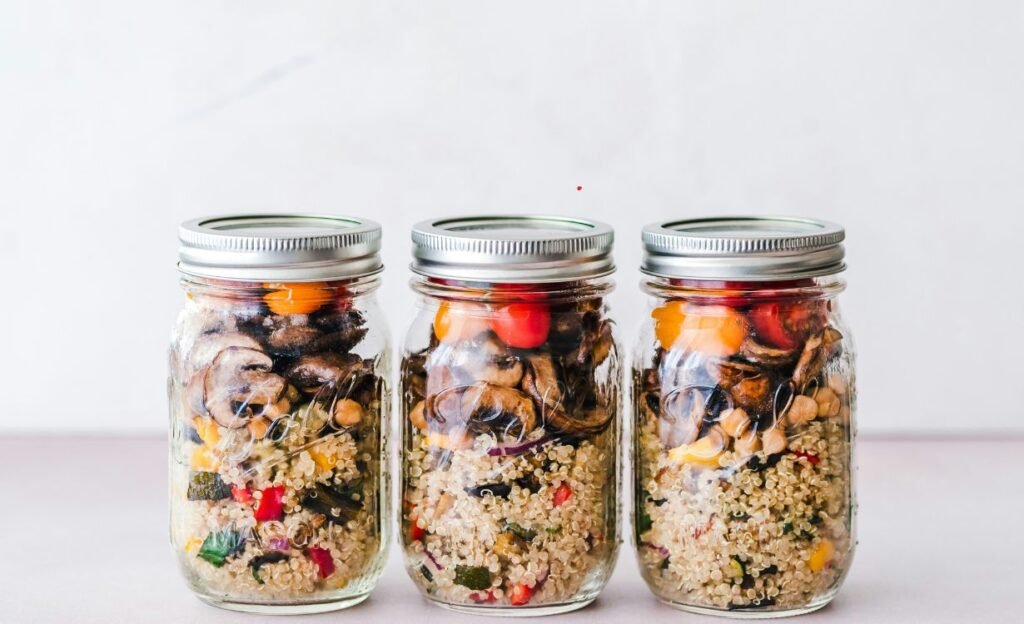Proper dry food storage is crucial for maintaining their quality and safety
Unfortunately, many people make critical errors in dry food storage that can lead to contamination, spoilage, and even health risks.
These mistakes not only waste food but also cost you time and money.
In this post, we’ll explore the seven most common dry food storage mistakes and how to avoid them.
By taking a few simple precautions, you can ensure your pantry remains safe, organized, and cost-effective.
Don’t let these easily avoidable errors ruin your food and your budget!
How Improper Dry Food Storage Affects Your Health and Wallet
1. For health:

Improper dry food storage can have serious health implications.
When food is stored in non-airtight containers or areas with poor ventilation, it becomes susceptible to mold, bacteria, and pests.
Consuming contaminated food can lead to foodborne illnesses, causing symptoms like nausea, vomiting, and diarrhea.
Additionally, exposure to harmful chemicals from improper storage can result in long-term health issues.
2. Financially:

these storage mistakes can lead to significant waste.
Spoiled or contaminated food must be discarded, resulting in frequent replacements and higher grocery bills.
Furthermore, medical expenses from foodborne illnesses can quickly add up, compounding your losses.
By avoiding these common storage errors, you can protect both your health and your finances, ensuring your dry foods remain safe and fresh.
Top 7 Dry Food Storage Mistakes
1. Improper Container Usage

Using non-airtight or non-food-grade containers can lead to contamination.
For example, storing rice in a regular plastic bag instead of a sealed, food-safe container can invite moisture and pests.
The FDA recommends using food-grade containers for all dry food storage to ensure safety and prevent contamination.
What Are Food-Grade Containers?
Food-grade containers are specifically designed to safely store food without leaching harmful chemicals or substances.
These containers meet stringent safety standards and are regulated by the FDA to ensure they are suitable for direct contact with food.
2. Lack of Pest Control

Failing to properly seal food or neglecting pest prevention measures can attract insects and rodents.
For instance, leaving a bag of flour open can attract pantry pests like weevils.
To prevent this, use airtight containers and regularly check storage areas for signs of pests.
The EPA provides guidelines on safe pest control practices that can be followed in dry food storage.
EPA, or Environmental Protection Agency is:
a U.S. federal agency responsible for protecting human health and the environment by enforcing regulations based on laws passed by Congress.
The EPA provides guidelines and regulations to ensure safe pest control practices, which are also applicable to dry food storage areas.
Some examples of these guidelines are
- Integrated Pest Management (IPM)
- Proper Sealing
- Sanitation and Maintenance
We will write a separate specific post on this topic very soon.
3. Inadequate Temperature Control
Storing dry foods in areas with fluctuating temperatures or high humidity can cause spoilage.
For example, keeping pasta in a damp basement can lead to mold growth.
The USDA suggests storing dry foods in cool, dry places with stable temperatures to maintain their quality.
And always keep in mind that we have to avoid keeping food in the Temperature Danger Zone (TDZ)
4. Ignoring Expiry Dates
Not rotating stock and using older products first (FIFO method) can result in expired or stale food.
For example, using newly purchased flour before the older stock can lead to waste.
Implementing the FIFO (First In, First Out) method ensures that older items are used first, reducing waste and keeping your dry food storage efficient.
5. Storing Foods Near Chemicals
Placing dry foods near cleaning products or chemicals can lead to contamination.
For instance, storing cereal boxes next to household cleaners under the sink can result in chemical leaching.
The FDA advises keeping food storage areas separate from chemical storage to avoid contamination risks.
By the way, we have written some beneficial tips on how can chemical contamination be prevented, you can check them out here.
6. Improper Labeling
Not labeling containers with contents and dates can cause confusion and lead to the use of expired or unsafe food.
For example, failing to label a jar of rice can result in using it past its prime.
Always label containers with the type of food and the date it was stored to maintain an organized and safe dry food storage system.
7. Inadequate Ventilation
Storing dry foods in areas without proper ventilation can lead to moisture buildup and mold growth.
For instance, keeping dry goods in a closed, humid cabinet can cause spoilage.
Ensure that storage areas are well-ventilated and dry to prevent these issues.
The USDA recommends proper ventilation to maintain the quality and safety of dry food storage.
Conclusion
By avoiding these seven common dry food storage mistakes, you can prevent significant losses in both money and health.
Proper storage practices not only keep your food fresh and safe but also protect your family from foodborne illnesses and costly waste.
Implementing these tips will ensure your pantry remains organized and efficient.
For more insights on how storage practices can lead to cross-contamination, be sure to check out our previous post
Together, these strategies will help you maintain a safer and more cost-effective kitchen environment.



